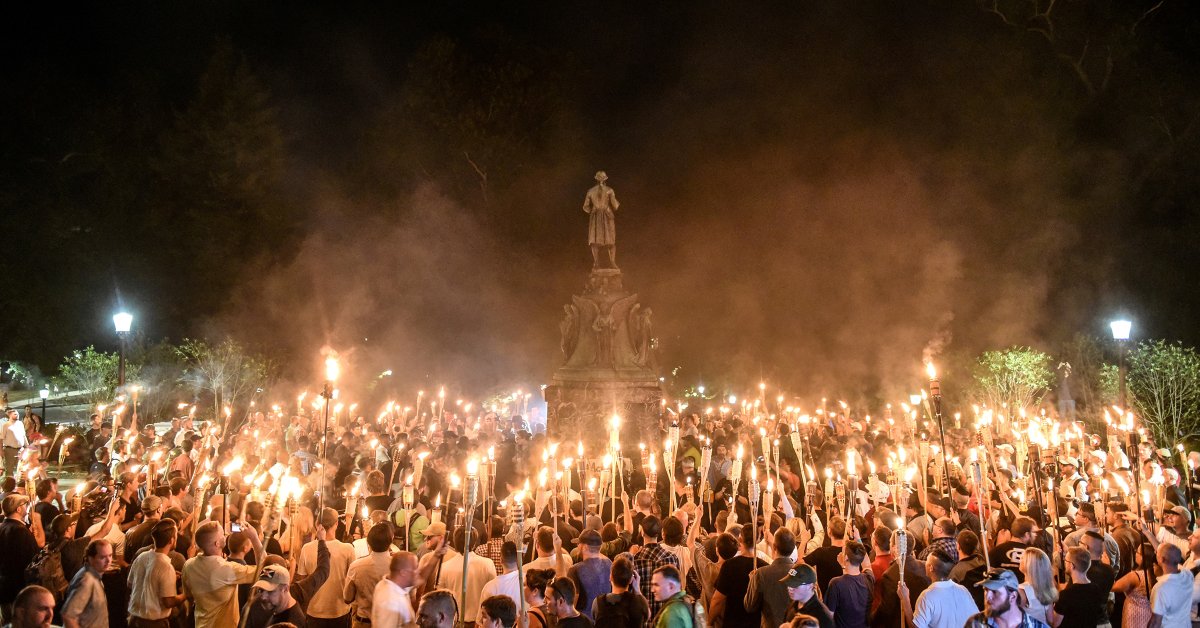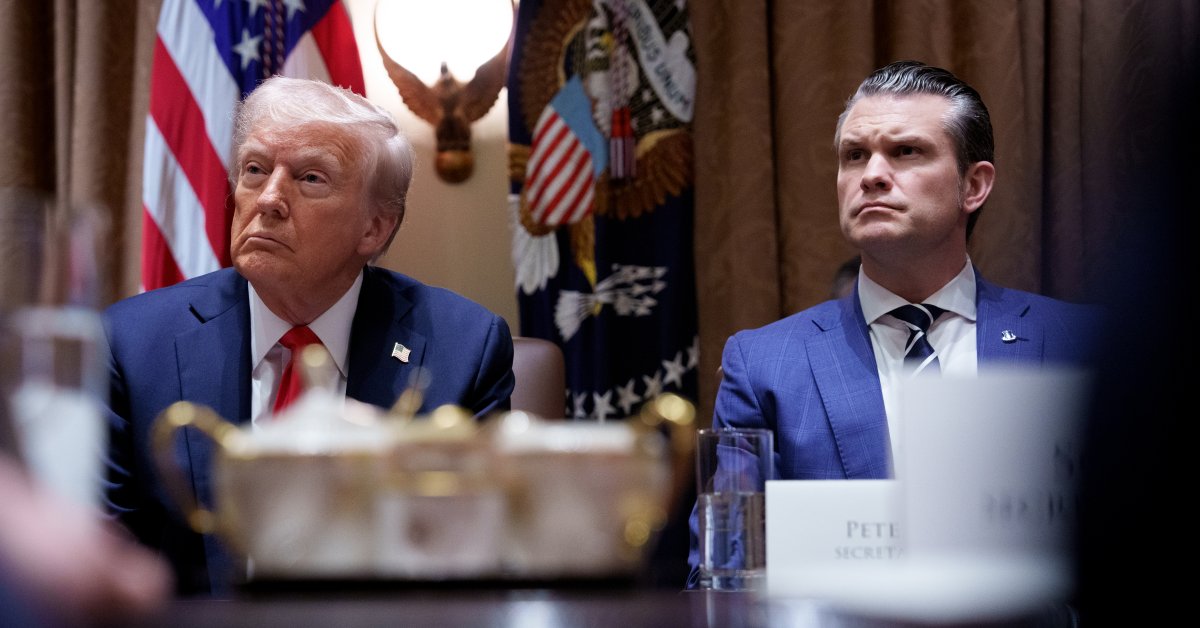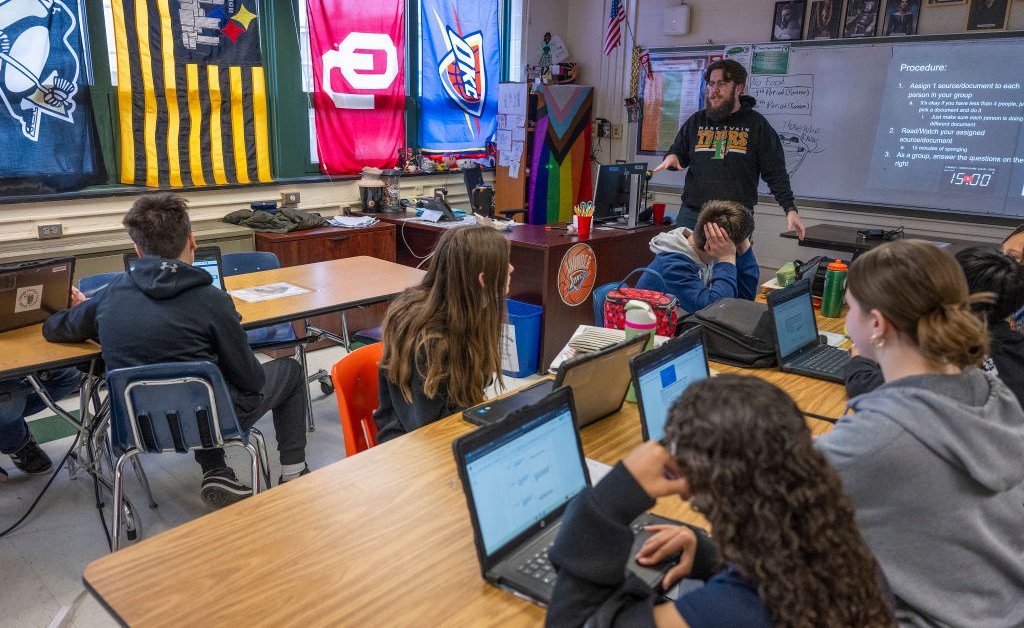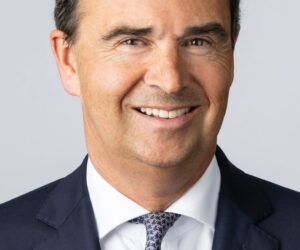Just hours after the killing of conservative influencer Charlie Kirk, when police were still searching for a suspect and a motive, President Donald Trump promised to crack down on the “radical left” groups that he blamed for his death, and for rising political violence across the country.
“Radical-left political violence has hurt too many innocent people and taken too many lives,” he said in an Oval Office address, adding that he would find “each and every one of those who contributed to this atrocity.”
Speaking again on Tuesday, days after the killing, Trump said that “most of the violence is on the left.”
But the data tells a different story. In the last five years, 81 people have been killed by political violence in the United States. Right-wing terrorists account for over half of those murders, some 54%, according to research by the Cato Institute, a libertarian think tank. Islamists account for 21%, and left-wingers for 22%.
Read More: The Killing of Charlie Kirk and the Political Violence Haunting America
The same study looked at data as far back as 1975 and found that terrorists inspired by Islamist ideology account for some 87% of all deaths (3122) from political violence, due to the mass casualties of the 9/11 attacks.
Excluding the 9/11 attacks, over the same period, terrorists inspired by right-wing ideology are responsible for 63% of deaths from political violence during that time, compared to 10% for left-wing attacks. Since 1975, there have been 391 deaths caused by right-wing terror attacks in the United States, and 65 deaths from left-wing terror attacks.

Colin Clarke, senior researcher at the Soufan Center focusing on domestic and transnational terrorism, says the data shows a clear disparity in lethality between left and right when it comes to political violence.
“There’s no question that, if you look at the numbers in terms of lethality, it is the far right that’s been far more lethal—Tree of Life, the El Paso Walmart attack, the Buffalo supermarket shooting,” Clarke tells TIME. Each of these attacks was committed with extremist, white-supremacist motivations.
Clarke notes that Trump’s speech mentioned notable instances of left-wing terror in recent years, but dodged any mention of right-wing terror.
“He mentioned all these issues of far-left terrorism… But he omitted the attack on [Michigan Governor] Gretchen Whitmer. I don’t think he mentioned the arson attack against Governor [Pennsylvania Josh] Shapiro. So do we only care about one type of extremism? And if so, why wouldn’t we care about the more lethal threat?”
The Trump Administration’s focus on left-wing violence at the expense of the more deadly threat of right-wing violence was drawn into sharp focus on Monday when Trump was asked by a reporter whether flags should have been flown at half-staff following the recent assassination of Minnesota Democratic lawmaker Melissa Hortman, as they were for Kirk.
“I’m not familiar, who?” Trump replied, adding, when someone explained who Hortman was: “Well, I would have done if the governor had asked me to do that.”
Alex Nowrasteh, who conducted the study, says that the main takeaway from his research is that politically motivated violence is “very uncommon in the United States,” and any major policy shift based on these small amounts of murders would be in contradiction to his findings.
“The rhetoric does not match the evidence. Everyone is rightfully aghast and disturbed by the video and the murder, but a horrible individual murder is not evidence of a massive society-wide problem or trend,” Nowrasteh tells TIME.
“I just don’t want to blow this out of proportion to give the government an excuse to crack down in a way that would be detrimental to all of our liberties.”
The Cato Institute study, which used 18 data sets and documents, found that a total of 3,599 people have been murdered in politically motivated terrorist attacks in the United States since 1975.
The study categorizes left-wing attacks as those motivated by animal rights, environmentalism, and “anti-police sentiment,” to name a few. Right-wing attacks include those motivated by sentiments such as white supremacy and anti-abortion beliefs.

Experts do note, however, that political violence is rising—even if from a low starting point—spurred by increased polarization, economic insecurity and racial tensions.
The last few years have seen the storming of the U.S. Capitol by Trump’s supporters to impede the certification of a presidential election, more than 9,600 recorded threats against members of Congress, a hammer-wielding assailant attack on Speaker Nancy Pelosi’s husband Paul, and the attempted stabbing of New York gubernatorial candidate Lee Zeldin at a campaign rally. Just last year, Trump faced two attempts on his life on the campaign trail.
A recent TIME cover story on rising political violence noted numerous incidents just this year:
“The residence of Pennsylvania Governor Josh Shapiro, a Democrat, was set on fire by an arsonist; a gunman shot two Democratic Minnesota legislators and their spouses; two Israeli embassy staffers were shot and killed outside the Capital Jewish Museum in Washington, D.C.; a man shouting “free Palestine” tossed Molotov cocktails at a pro-Israeli demonstration in Boulder, Co., injuring multiple people and killing one; and a gunman who allegedly held anti-vaccine views opened fire at CDC headquarters in Atlanta.”
But Benjamin Radd, a political scientist and professor of law at the University of California, Los Angeles, says the Trump Administration’s characterization of a big shift in left-wing violence is not represented in the numbers.
“If the number grows from one to five, that is like a five-fold increase…So I think what Trump is saying is, yes, we do have more than we did before, but before was basically negligible—so does that represent a trend? No, we don’t have enough data,” Radd says.
Radd says that policy changes around political violence are often based less on the “quantity” of the violence and more about the “quality” of the media storm surrounding them—something Radd says Trump amplifies “very effectively”. The recent killing of Melissa Hortman and her husband, and the shooting of Minnesota Sen. John Hoffman, for example, received much less attention from the public and from Trump himself. Investigators said the suspect in that killing, 57-year-old Vance Boelter, had a “hit list” of 45 elected officials — all Democrats.
“That amplification is, in my opinion, what makes this look bigger and the trend look more real than it actually is,” Radd says. “It’s the feeling that it stokes, it’s the images, the iconography, the content that’s used to convey and to reinforce these fears. That’s much more powerful than what the data actually shows.”








